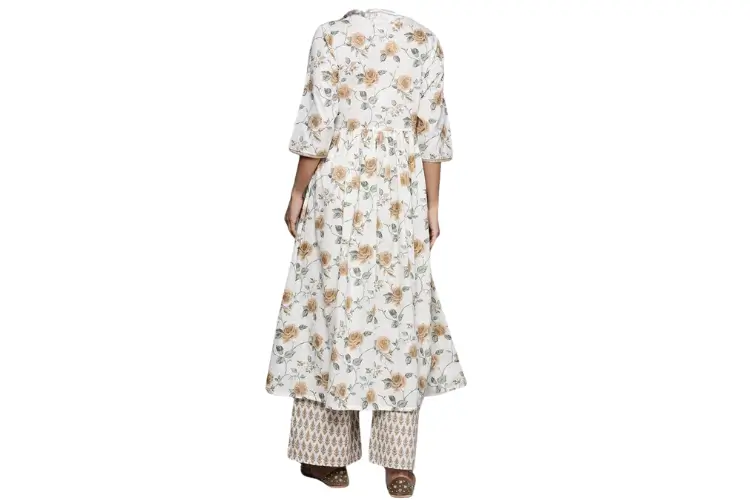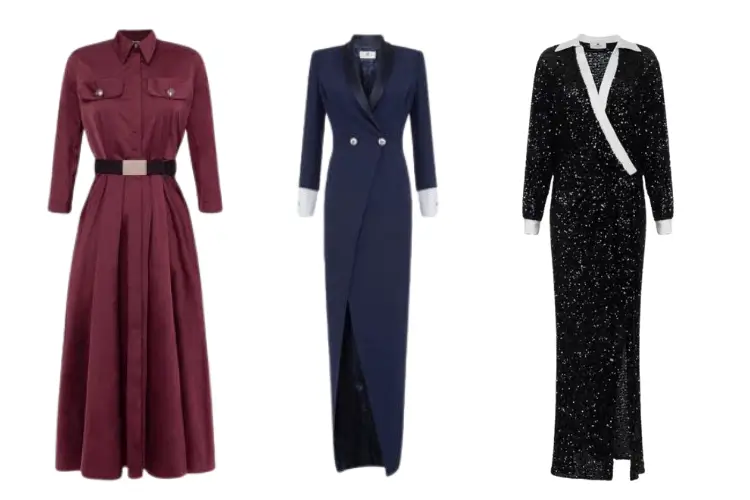Workwear is an essential part of many professions, providing comfort, protection, and functionality to workers. Different industries require different types of workwear, from protective gear for construction workers to professional uniforms for hospitality staff. There are various types of workwear available in the market, each designed to meet the specific needs of different occupations.
When it comes to selecting reliable and comfortable workwear, Mister Uniform stands out as a trusted provider, offering a wide range of tailored solutions that complement our in-depth types of workwear guide by ensuring both functionality and professional style across industries.
One of the most common types of workwear is industrial workwear, which is designed to protect workers from hazards such as chemicals, fire, and electricity. Industrial workwear includes coveralls, gloves, safety glasses, and hard hats. Another type of workwear is career workwear, which is worn by professionals such as doctors, nurses, and lawyers. Career workwear is typically more formal and includes items such as suits, blouses, and dress shoes.
What is Workwear?
Workwear is a type of clothing that is designed to be worn for manual labor or other types of work. It is typically made from durable materials that can withstand wear and tear, and it often includes features like reinforced stitching, pockets, and other functional elements that make it easier for the wearer to perform their job.
One of the most important aspects of workwear is its ability to protect the wearer from injury or harm. This can include protection from sharp objects, chemicals, extreme temperatures, and other hazards that are commonly found in the workplace. To achieve this, workwear often includes specialized safety features like reinforced toes on boots, flame-resistant fabrics, and high-visibility materials that make it easier for others to see the wearer.
Another important aspect of workwear is its ability to provide comfort and mobility. Many jobs require workers to move around a lot or perform repetitive motions, and workwear that is too tight or restrictive can make these tasks more difficult. To address this, many types of workwear are designed to be loose-fitting and breathable, allowing for a full range of motion and maximum comfort throughout the workday.
Different types of Workwear in industry
Workwear is an essential aspect of many industries, providing employees with comfort, protection, and a sense of unity. Different industries have unique workwear requirements, and it is important to choose the right workwear for the job. In this section, we will discuss industry-specific workwear for Healthcare, Construction, Food Service, and Automotive.
Healthcare
Healthcare workers require specialized workwear that provides protection against infectious diseases and bodily fluids. The workwear should also be comfortable and breathable to allow for long hours of wear. Common healthcare workwear includes scrubs, lab coats, and gowns. These garments are typically made of lightweight, non-woven fabrics that are disposable or washable.
Scrubs are the most common workwear for healthcare professionals, and they come in a variety of styles and colors, such as Teal Medical Scrubs and pink medical scrubs. They are designed to be comfortable, breathable, and easy to move in. Lab coats are worn over scrubs and provide an extra layer of protection. They are typically made of cotton or polyester and are available in different lengths. Gowns are worn when working with patients who have contagious diseases or when performing surgical procedures. They are made of fluid-resistant materials and provide full-body protection.
Construction
Construction workwear should provide protection against hazards such as falls, cuts, and abrasions. It should also be durable and comfortable to allow for long hours of wear. Common construction workwear includes high-visibility vests, hard hats, safety glasses, and steel-toed boots. High-visibility vests are essential for construction workers who work near traffic or heavy machinery. They are designed to be highly visible and come in different colors and styles. Hard hats protect the head from falling debris and are available in different classes, depending on the level of protection required. Prescription safety glasses with side shields protect the eyes from flying debris and should be worn at all times on a construction site. Steel-toed boots provide protection against crushing injuries and are a must-have for any construction worker.
Food Service
Food service workwear should be comfortable, breathable, and easy to clean. It should also provide protection against spills and stains. Common food service workwear includes chef coats, aprons, and non-slip shoes. Food service establishments may also choose Branded Workwear to ensure employees are protected while also subtly marketing the business through uniforms.
Chef coats are typically made of cotton or polyester and come in different styles and colors. They provide protection against spills and stains and are easy to clean. Aprons are worn over chef coats and provide additional protection. They come in different styles and lengths and are made of materials such as cotton, polyester, or vinyl. Non-slip shoes are essential for food service workers who work in wet or slippery environments. They provide traction and reduce the risk of slipping and falling.
Automotive
Automotive workwear should provide protection against hazards such as oil, grease, and chemicals. It should also be durable and comfortable to allow for long hours of wear. Common automotive workwear includes coveralls, gloves, and safety glasses.
Coveralls are designed to provide full-body protection against oil, grease, and chemicals. They come in different materials and styles and should be chosen based on the specific job requirements. Gloves provide protection against cuts, abrasions, and chemicals and should be chosen based on the specific job requirements. Safety glasses protect the eyes from flying debris and should be worn at all times in an automotive shop.
Different types of Workwear Features
When it comes to workwear, safety features are essential to protect workers from hazards. This section will cover the most common safety features found in workwear.
High Visibility
High visibility workwear is designed to make workers more visible in low light conditions. This type of workwear is often worn by construction workers, road workers, and emergency responders. High visibility workwear is typically made from fluorescent materials that reflect light, making the wearer more visible from a distance.
Flame Resistant
Flame-resistant workwear is designed to protect workers from flames and heat. This type of workwear is often worn by workers in industries such as welding, oil and gas, and firefighting. Flame-resistant workwear is typically made from materials that can withstand high temperatures and prevent flames from spreading.
Chemical Resistant
Chemical-resistant workwear is designed to protect workers from hazardous chemicals. This type of workwear is often worn by workers in industries such as manufacturing, agriculture, and healthcare. Chemical-resistant workwear is typically made from materials that can resist the penetration of chemicals and prevent skin contact.
How to choose the right type of workwear?
Choosing the right workwear depends on a variety of factors, including your industry, your company’s dress code, the tasks you perform, and your personal style. Here are some tips that can help you make the right decision:
1. Understand the Dress Code
Different workplaces have different dress codes ranging from formal to business casual to casual. It’s essential to understand which one applies to your workplace. This information can typically be found in your company’s handbook or by asking your HR representative.
2. Dress for Your Role
Consider the tasks you perform in your role. If you’re in a job where you meet with clients or represent your company in public, you may need to dress more formally. If you’re in a job that involves physical labor, you’ll need durable, comfortable clothes that protect you from workplace hazards.
3. Prioritize Comfort and Fit
No matter your job role, comfort is key. Choose clothing that fits well and allows you to move freely. If you’re uncomfortable, it can distract you from your work and lower your productivity.
4. Choose Appropriate Colors and Patterns
In most traditional business environments, neutral colors like black, grey, navy, and white are the norm. However, some workplaces might be more lenient, allowing more vibrant colors and patterns. Always err on the side of caution if you’re unsure.
5. Invest in Quality
Quality clothing may cost more upfront, but it will also last longer. This is especially important for things like shoes and outerwear, which see a lot of wear and tear.
6. Safety First
In some job roles, certain types of workwear may be required for safety reasons. For example, you may need steel-toed boots, a hard hat, or high-visibility clothing. Always prioritize safety requirements when choosing your workwear.
Conclusion
In conclusion, understanding the different types of workwear is crucial for ensuring safety, comfort, and productivity in various industries. From protective clothing for hazardous environments to professional attire for corporate settings, workwear plays a vital role in creating a suitable and productive work environment. By considering the specific requirements of each job and selecting the appropriate workwear, employees can perform their tasks with confidence and peace of mind. Additionally, employers have a responsibility to provide proper workwear that meets safety standards and promotes employee well-being. By prioritizing the importance of workwear, both employees and employers can contribute to a safer and more efficient workplace.




